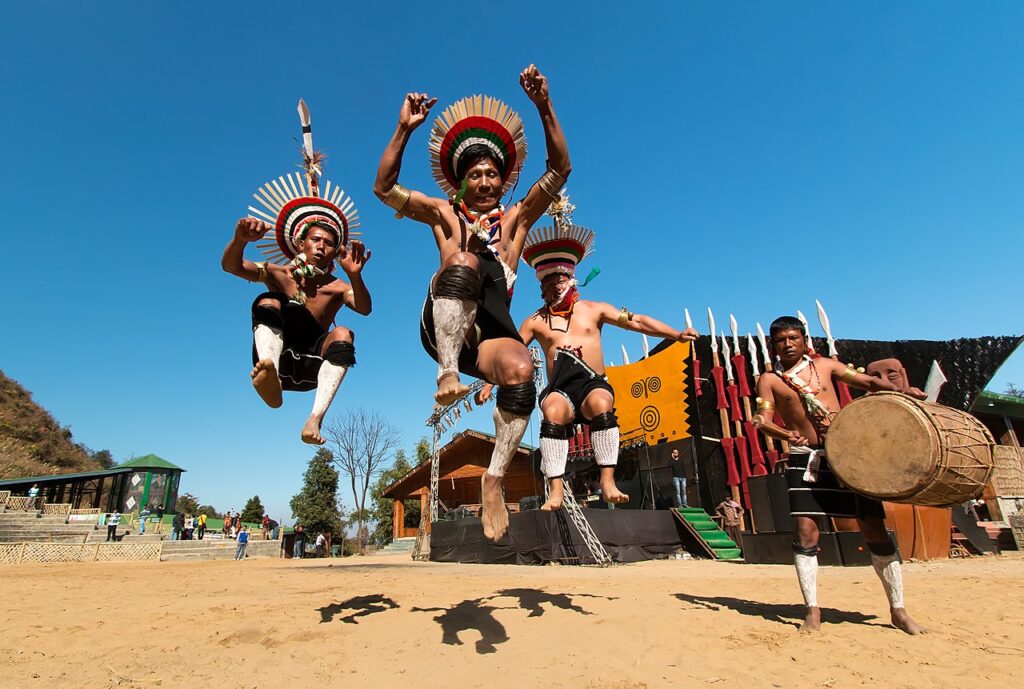Recently, there has been a paradigm shift away from the Western notions of conservation which seperates people from wildlife. Instead, there has been a significant focus on encompassing indeginious communities and traditional knowledge in conservation. Tribal peoples are generally viewed as the better conservationists, as they link with nature more spiritually, but they rarely get credit for it. They have managed, protected, nurtured, and organized their land for generations. Traditional knowledge, therefore, plays a crucial role in conservation.
India’s Rich Traditional Knowledge remains Underutilized
Their knowledge about wildlife is much more than any theory. Indigenous people are present all over the world in distinct geographical areas and are an inestimable box of traditional knowledge. They are scattered over the face of earth in around 70 countries. Among them over 150 million live in Asia; two thirds in China and India.
India is the second largest area of tribal populace subsequent to Africa. The total scheduled tribe in India is approximately 6.78 crores as per the 1991 census. Among this, around 87% of the tribes are focused in the central region of India covering the states of Madhya Pradesh, Odisha, Bihar, Maharashtra, Gujarat, Rajasthan, Andhra Pradesh and West Bengal. 10% of the humans are in North-Eastern states and 3% in different states.
Among all the states the state of Madhya Pradesh has the most tribes and constitutes 1.54 agenda tribe population in the country. India’s tribal peoples have lived with and nurtured the special flora and fauna of the Indian jungle for centuries. “We all have been living collectively as one: the forest, the animals and the tribes”, a Jenu Kuruba man said.

Traditional Knowledge does make Conservation more effective
Research has additionally proven that in some regions, u=indigenous control over the lands leads to decrease in deforestation. Biodiversity is declining extra slowly in areas managed by Indigenous peoples and nearby communities. Indigenous peoples’ contributions are vital in framing and imposing solutions for ecosystems. Traditional theory and heritage can contribute to a sustainable ecosystem management. Tribal communities suffer when expelled in the name of conservation.
For example- South Asia’s tribal peoples have synchronized with the tiger for hundreds of years, however now they are dealing with eviction in the title of defending the animal. There is evidence, for example, from Chitwan national park in Nepal, that tiger densities can without a doubt is higher in the areas where people live than in those places from where they have been evicted. People grant a variety of exclusive habitats and eyes and ears to notice and deter poachers.
Much of the ancestral land of Baka “Pygmies” in southeast Cameroon has been transformed into national parks and hunting zones. The Baka are being compelled from the forests and accused of “poaching” as they hunt their food. They face harassment and beatings, torture and demise from anti-poaching squads. Many Baka say their condition has deteriorated due to the fact being pressured from the forest. They are criminalised as poachers.
The tribes’ reciprocal relationship with the forest is based on the principle of giving back to the nature what they take from it without wasting. For example- Soligas harvest honey from high trees and left some in the ground for the tigers as they can’t climb. Many tribes, such as the Chenchu, worship the tiger, considering it a god. For others, such as the Baiga and the Mising, the tiger is viewed as a partner with whom they share the forest.
Women in 135 tribal villages of Odisha take a look at ‘thengapalli’ to guard forest assets from over-exploitation. Every morning most ladies in the Kodarapalli tribal village in Odisha prepare to fetch woodland sources and then prepare for their family chores. Interesting, a few others pick up lathis or sticks alternatively – and head to the forest. These women do not challenge to hunt an animal for meat or defend themselves from anti-social humans or wild animals. Instead, these ladies set out to safeguard the wooded area and its resources.
Conclusion
The above examples are the evidence that prove that the tribal people are an important part for protecting environment. Most of the world’s 6,000 national parks and 100,000 protected locations have been created with the aid of the elimination of tribal peoples.
A major change in thinking about conservation is now urgently required to save the threatened and endangered flora and fauna. Coordinating with indigenous tribes that are assisting in wildlife conservation is a better way to shield the environment and wildlife. The cheapest and quickest way to conserve areas of high biodiversity is to respect tribal peoples’ rights. Moreover, it is crucial to provide these communities with liveihoods which encourage them to continue preserving nature, rather than shift away from traditional and sustainable practices. The hornbill festival of the Nagas is one bright example.
Written by: Shreya Pandey and Akriti Kashyap
Help us Help Them! Think Wildlife Foundation is a non profit organization with various conservation initiatives. Our most prominent campaign is our Caring for Pari intiative. Pari is a rehabilitated elephant at the Wildlife SoS Hospital. 25% of the profits from our store are donated to the elephant hospital for Pari. Other than buying our wonderful merchandise, you could donate directly to our Caring For Pari fundraiser.
